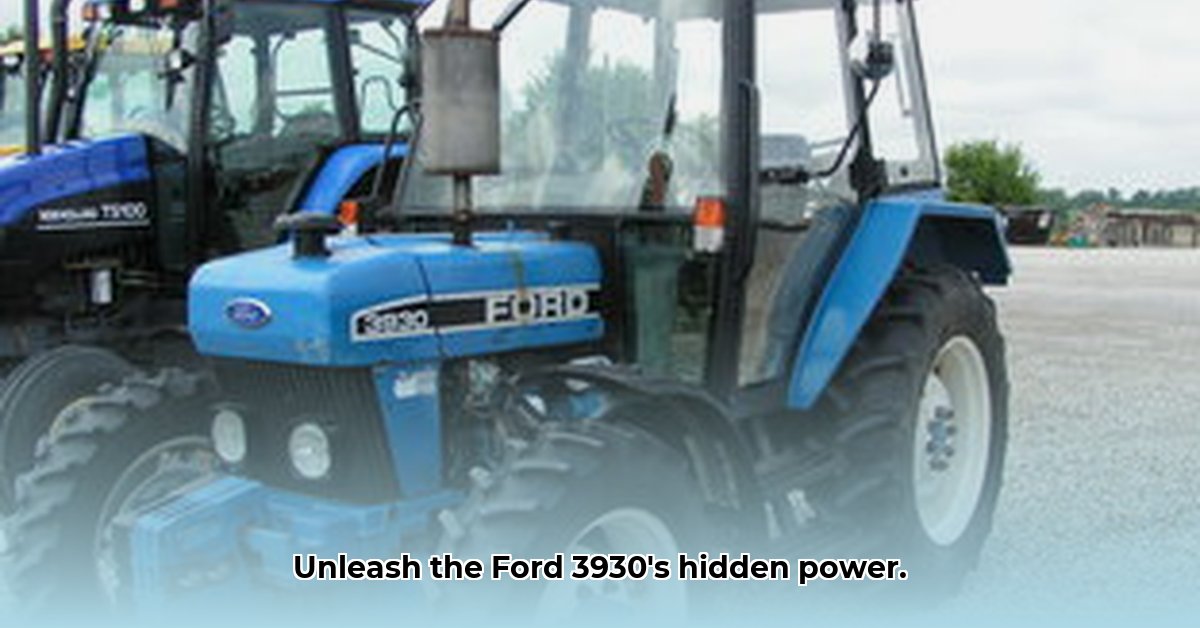
The Ford 3930, a stalwart of the utility tractor segment produced from 1990 to 2002, remains a popular choice for farmers and collectors alike. This comprehensive guide delves into the technical specifications of the Ford 3930, focusing on its horsepower and overall performance capabilities. We'll explore engine options, transmission types, and other key specifications to provide a nuanced understanding of this workhorse tractor. For more in-depth information, check out this comprehensive guide.
Engine Specifications & Horsepower: Understanding the Powertrain
The Ford 3930 offered several engine options, each impacting its horsepower output. These variations, coupled with different testing methodologies and potential manufacturing tolerances, can lead to discrepancies in reported horsepower figures. It's crucial to differentiate between PTO (Power Take-Off) horsepower – the power available at the PTO shaft for implements – and drawbar horsepower – the tractor's pulling power.
The following table summarizes the likely horsepower ranges, acknowledging the limitations of available data:
| Engine Type | Displacement (Liters) | PTO HP (Claimed/Estimate) | PTO HP (Tested - if available) | Drawbar HP (Estimated) | Notes |
|---|---|---|---|---|---|
| 3.3L 3-cyl Naturally Aspirated Diesel | 3.3 | 45-50 | ~52.54 (Single Source) | ~38.18 (Single Source) | Primarily found in earlier models. |
| 3.2L 3-cyl Naturally Aspirated Diesel | 3.2 | 50-55 | N/A | ~40-45 | Introduced later in the production run. |
| 3.2L 3-cyl Turbocharged Diesel | 3.2 | 60-65 | N/A | ~50-55 | Later model, offering increased power. Figures are estimates based on comparable models. |
Remember that claimed horsepower from manufacturer's specifications may differ from independently tested figures due to variations in testing protocols and manufacturing tolerances. The turbocharged engine's horsepower is especially difficult to pinpoint due to a lack of publicly available testing data.
Transmission Options & Impact on Performance
The Ford 3930 featured various transmission options, each affecting power delivery and overall performance. The available transmissions included:
- 8-speed transmission: A standard offering providing a good range of gears for various tasks.
- 8-speed shuttle shift transmission: Facilitated easier directional changes, enhancing efficiency in operations requiring frequent reversals.
The choice of transmission influenced the operator's experience and the tractor's overall efficiency in different work scenarios. The shuttle shift transmission, for example, increased efficiency in applications requiring frequent direction changes.
Other Relevant Technical Specifications
Beyond horsepower and transmission, several other specifications define the Ford 3930's capabilities:
| Specification | Value(s) | Notes |
|---|---|---|
| Fuel Tank Capacity (ROPS) | 17.3 US gallons (65.5 Liters) | ROPS (Roll Over Protective Structure) configuration may affect tank placement. |
| Fuel Tank Capacity (Cab) | 25.3 US gallons (95.8 Liters) | Cab models typically offer larger fuel tanks. |
| Weight | 5157 to 6025 lbs (2340 to 2733 kg) | Weight varies based on configuration and added options. |
| Rear Lift Capacity | 3080 lbs (1397 kg) | Maximum weight the three-point hitch can lift. |
| PTO Type | 540 RPM | Standard PTO speed for many agricultural implements. |
| Typical Tire Sizes (Front) | 6.00-16 | |
| Typical Tire Sizes (Rear) | 13.6-28 |
These specifications provide a complete picture of the tractor's operational capabilities.
Comparison with Contemporaries
Direct comparisons with contemporary tractors from John Deere, Massey Ferguson, or Case IH are difficult without detailed records of each competitor's specific models and testing data from the same period. However, the Ford 3930 generally held its own in the utility tractor market, offering a balance of power, features, and affordability.
Conclusion: A Workhorse Through and Through
The Ford 3930, with its array of engine and transmission options, stands as a testament to robust engineering and reliable performance. While precise horsepower figures can be ambiguous due to various factors, its enduring appeal highlights its suitability for a wide range of agricultural tasks and its lasting legacy as a dependable workhorse.
Sources and Additional Resources
While specific testing data for all configurations is scarce, further research can be conducted using online tractor forums and resources like TractorData. Consult your owner's manual for specific details about your tractor's configuration and recommended maintenance procedures. [1]
[1]: (Example: A relevant website focusing on vintage Ford tractor information would be inserted here.)